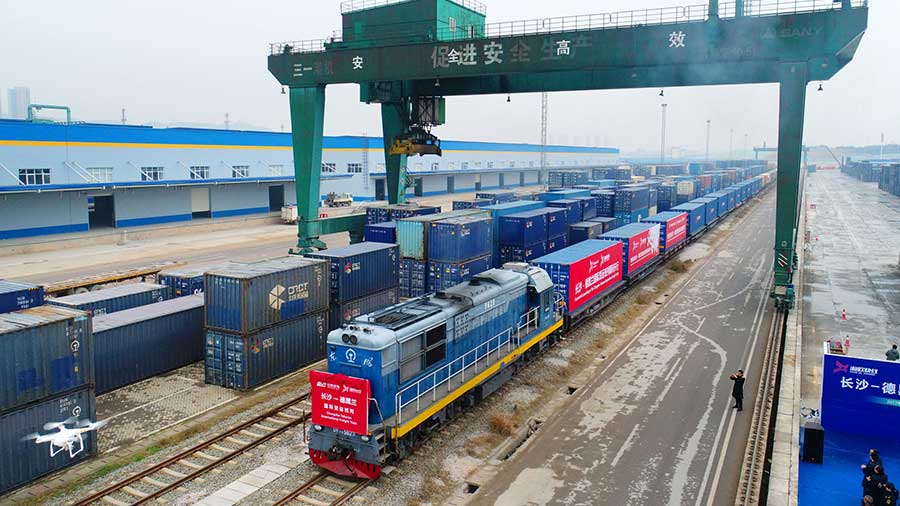Iran’s Ministry Of Urban Development: Asian Countries Are Talking With Us About Developing New Supply Chains To Europe

A China Railway Express Train leaving Changsha for Tehran
The INSTC is developing into a massive regional supply chain network
Amin Taraffo, the Director-General of Commercialization and Associations Affairs Bureau at Iran’s Ministry of Road and Urban Development has stated that transit through Iran’s transportation corridors is increasing following the conflict between Russia and Ukraine.
“Business users who previously used Iran’s northern routes to Europe are now interested in using Iran’s central and southern routes, and our private sector has also increased transportation via these corridors,” he said, also stating that Iranian statistics indicate a rise of interest in transit through Iran’s east-west and north-south corridors.
According to Taraffo, representatives of numerous Asian countries and especially China are visiting Iran to develop transit routes.
He pointed out that the negotiations for transportation on roads or by train are ongoing and Iran holds routine talks with regional countries to maintain conditions and tariffs.
“Iran can cooperate with Russia and Azerbaijan and other countries, and participate in activating new transportation corridors.” he said.
These have developed from the original North-South Transportation Corridor (INSTC) which was originally a joint Indian-Iranian venture to fund both the Iranian Gulf sea port at Chabahar and develop a north-south railway to Iran’s ports on the Caspian Sea. This was to allow India’s Mumbai to develop alternative connectivity to markets in Iran (bypassing Pakistan) and beyond. Chabahar port is now developed while the rail connections should be completed next year. The route is operational and currently uses road transport until the railway is completed.
However, the INSTC has opened up new potential transport corridors due to Iran’s unique geophysical positioning and other geopolitical dynamics such as in Afghanistan, the Ukraine conflict and the development of the Shanghai Cooperation Organisation as a strong regional inter-governmental platform.
From the Iranian north-south railway, a spur east heads to the Afghanistan border, where developments in trade and manufacturing are already underway. The Afghani city of Herat is within relatively easy reach and is a manufacturing oriented hub. This will present opportunities later to better supply the Afghani market in terms of import and export and get lower cost labor in Afghanistan to work, thus helping its destroyed economy to rebuild.
On the Caspian, Iran’s main ports at Anzali and Noshahr can send cargo in several directions:
- Azerbaijan’s Baku Port: Connections via rail through the Caucasus and to Georgian and Turkish Black Sea ports to European ports in Bulgaria and Romania. More here.
- Turkmenistan’s Turkmenbashi Port: Rail links to Uzbekistan, Kazakhstan, and China. More here.
- Kazakhstan’s Aqtau Port: Rail links through to Central Asia, Russia, and China. More here.
- Russia’s Lagan Port: Access to Russia via rail and the Volga River network. More here.
Related Reading
About Us
Chris Devonshire-Ellis is the Chairman of Dezan Shira & Associates. The firm assists British and Foreign Investment into Asia and has 28 offices throughout China, India, the ASEAN nations and Russia. For strategic and business intelligence concerning China’s Belt & Road Initiative please email silkroad@dezshira.com or visit us at www.dezshira.com





